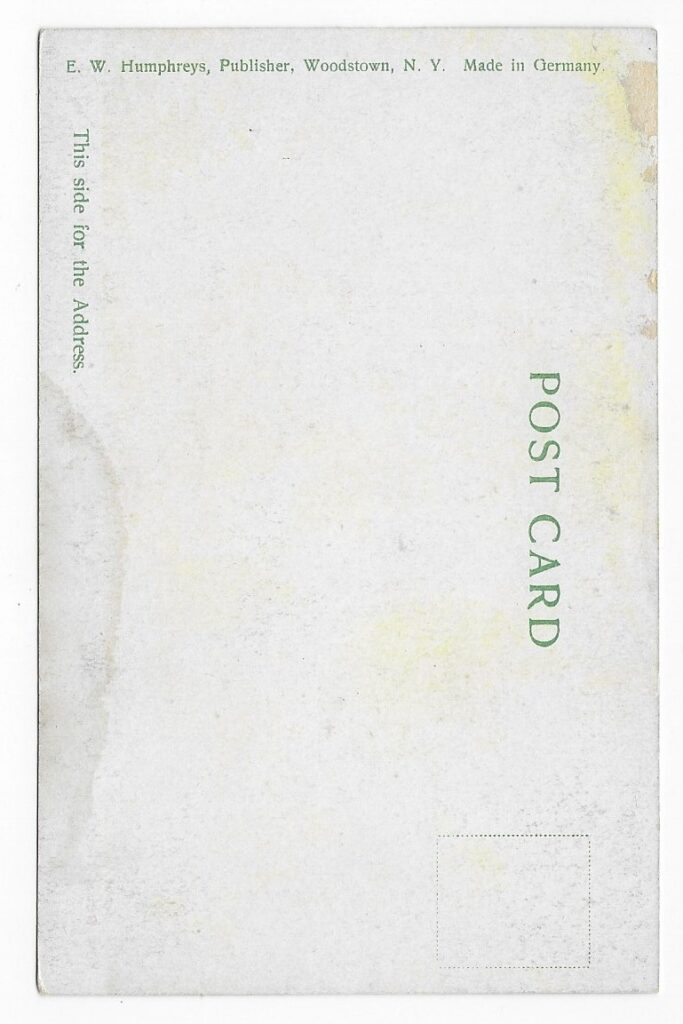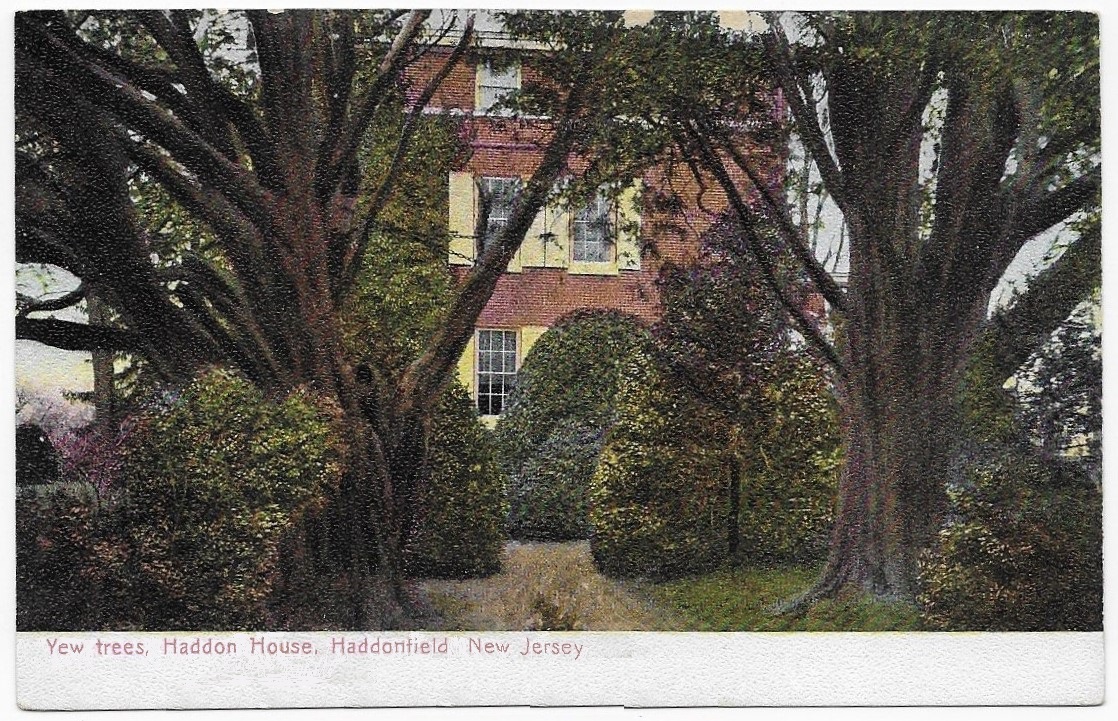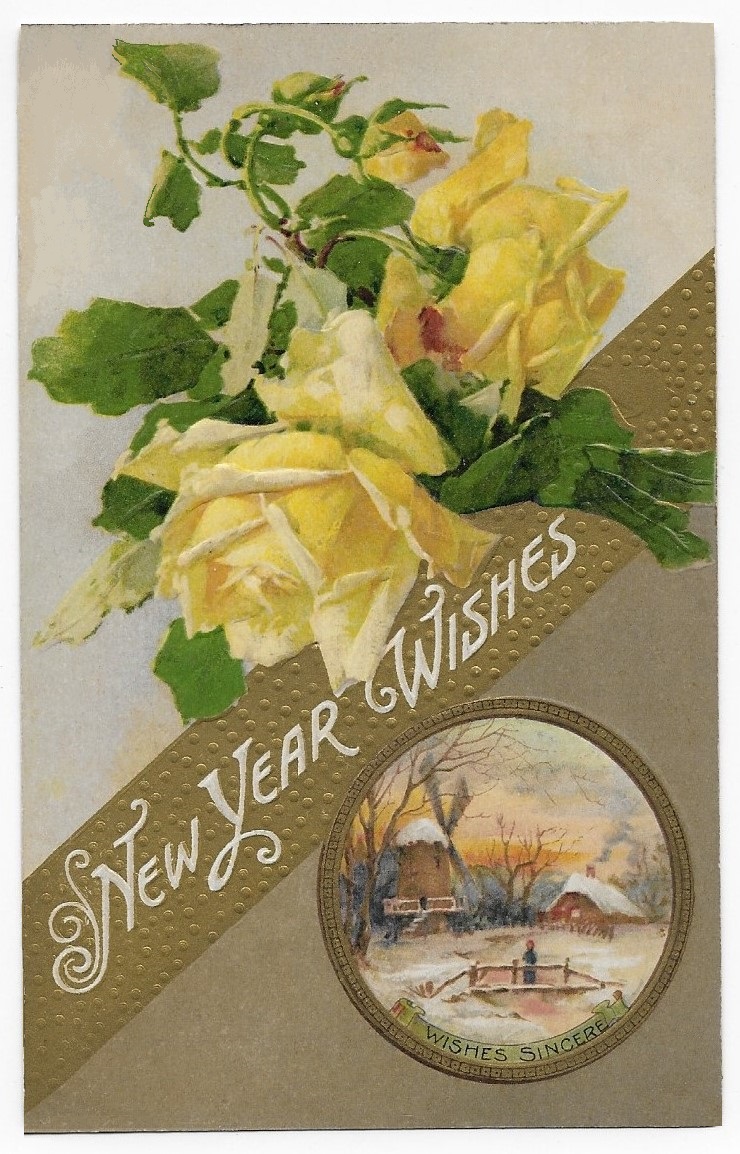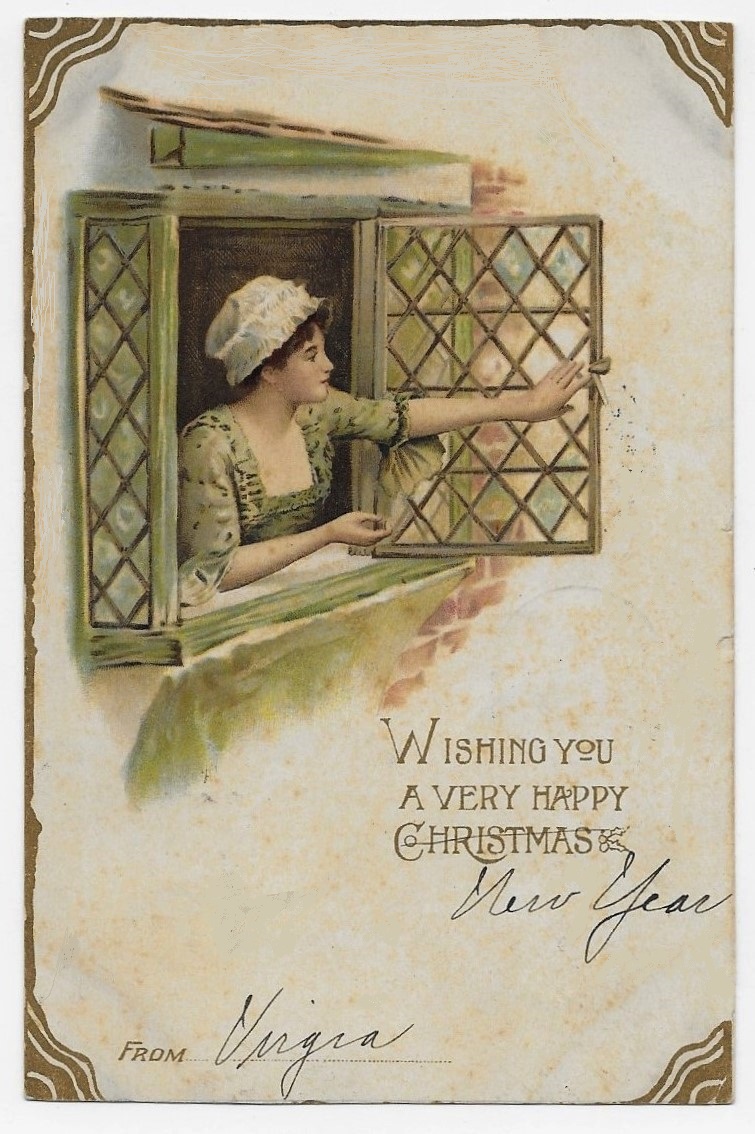Haddonfield is a picturesque and historic borough of Camden County in southwest New Jersey.
The first European settler in the area was Francis Collins, an English Quaker who built a home in this wilderness in 1682.
Haddonfield was named, however, for another English Quaker, John Haddon, who purchased 500 acres in the English colony of West Jersey to escape religious persecution.
The daughter of John Haddon, Elizabeth Haddon, sailed alone to the New World (from Southwark, England) in 1701.
Soon after her arrival, Elizabeth married a Quaker leader – and their property was developed as “Haddonfield”, in honor of John Haddon who died before coming to the colony.
https://en.wikipedia.org/wiki/Haddonfield,_New_Jersey
The home of Elizabeth Haddon and her husband burned down in 1842.
A small painting of the home of Elizabeth Haddon was made by the American painter, John Redman, about 1825.
This rare image is in the collection of the Monmouth County Historical Association.
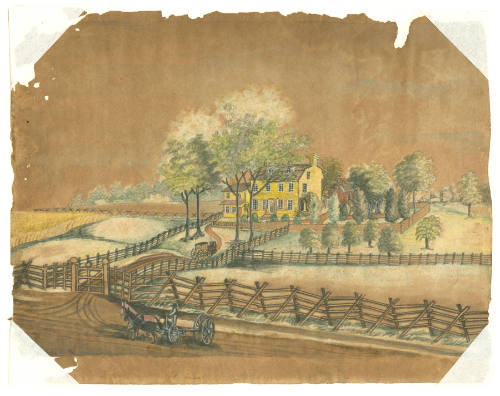
On the site of the original Hadden House, a handsome Georgian home was erected by the Woods family who lived there until the 20th century.
This brick home was featured on this postcard photograph circa 1905.
The postcard was printed in Germany and published by E. W. Humphreys, Publisher of Woodstown, New York.
This postcard image shows only a portion of the front of the house.
A full view of the house and environs is captured in a glass-negative photograph now in the collection of the Library Company of Philadelphia.
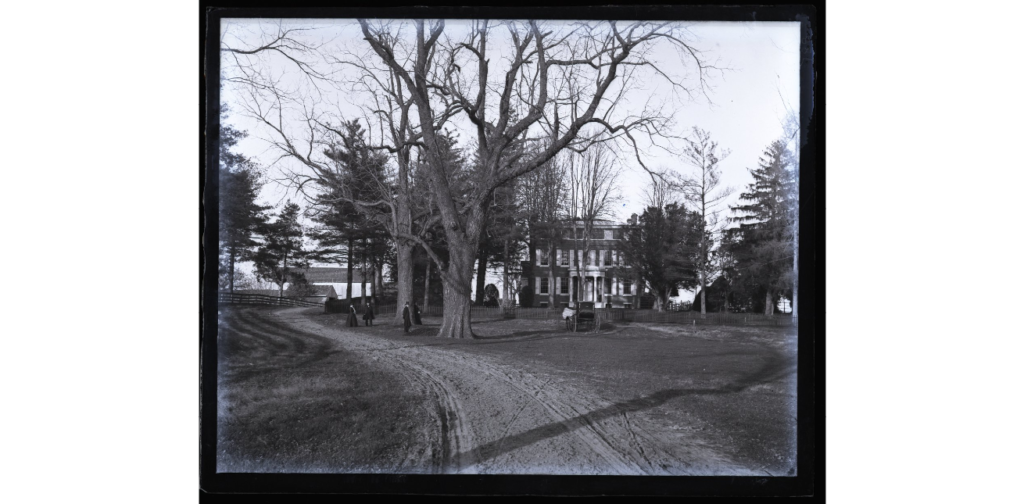
The printed legend, below the postcard photograph, draws attention to the enormous yew trees in the foreground.
It is possible that the trees may have been planted by Elizabeth Haddon at the original Haddon Hall.
The yew tree, venerated since the pre-Christian era and incorporated into the celebration of Palm Sunday, is beloved in England and adorns many English gardens.
Because the Yew is one of the longest-lived trees and not considered “old” until it reaches about 900 years, planting a yew is a sign of commitment to the future.
https://www.woodlandtrust.org.uk/trees-woods-and-wildlife/british-trees/a-z-of-british-trees/yew
Alas, the yew trees pictured on the postcard did not survive into the 21st century,
Although the 1842 house has been maintained in remarkable condition, the yew trees have been replaced with a large lawn edged with smaller trees and shrubs.
